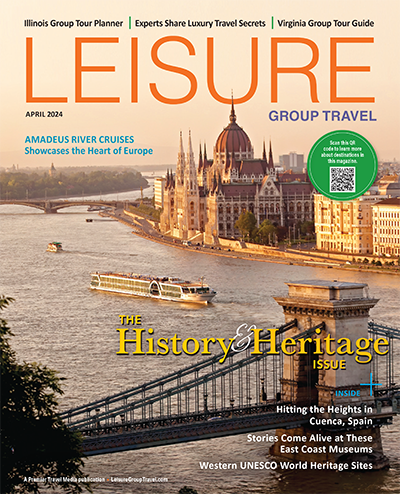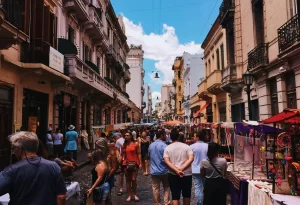Whether you’re leading a tour yourself, planning an itinerary or deciding where you’re going to take a group next, we all end up doing a lot of research online and with guidebooks. However, much of the information that’s easiest to discover fails to tell the full or most interesting story of a place. After Black History Month in February and Women’s History Month in March, let’s take a moment and look at some tips for diversifying the stops you visit and the stories you tell on a group tour.
1. Examine the roots of the place you’re visiting
Whether you’re visiting a National Park or a busy city, chances are there’s a deep indigenous history that predates European settlement. This is often the least-mentioned information on a tour. Learn the specific name of the tribe(s) who have and continue to inhabit the land. Learn their individual stories, and dig deeper before accepting commonly-retold myths and inaccuracies, or failing to acknowledge that history at all.
I live in New York City and worked for over 15 years as a tour guide. In Manhattan’s Financial District I often spoke about the $24 “sale” of Manhattan to the Dutch by the Lenape Indians. Debunking this myth properly means digging deep into what the meaning of the land for the various tribes that traversed Lower Manhattan, and what life looked like for them.
2. Seek the complete truth of the places you stop and stories you tell
Sometimes, the stories as they’ve been told for generations simply aren’t complete. They focus on one aspect, like the Great Architects and Explorers and Philanthropists who helped design and create cities and lands. As guides and tour leaders and itinerary designers, we have a responsibility to choose stops and craft stories that honor the full story of a place.
Let’s return to New York’s Financial District. At Bowling Green Park, you look around and see the imposing Customs House, and office buildings once belonging to the great shipping companies that made so much money from traversing the oceans. The Dutch became so good at this that the century of exploration became known as the Golden Age.
But that’s only a partial truth, looking through a particular Western lens. In the practice that forms part of what is sometimes known as decolonizing travel, we can understand the same time period from the perspective of marginalized communities. For example, during this Golden Age, the Dutch enslaved and transported 600,000 African people to the Americas. By the 1630s, in the colony of New Amsterdam (which would become New York), there were around 100 enslaved individuals. Without slave labor, New Amsterdam might not have survived.
3. Look for new, diverse stories and stops
Finally, in addition to greater accuracy in our accounting of the past, and looking at multiple perspectives of the stories we tell, we should seek out brand new stories and stops to enrich our tours! When preparing for a tour by doing online research, simply add—for example—”enslaved history,” “women’s history,” or “LGBTQ history” to your Google searches. That way you’ll get results that look completely different than searching for the term alone and are often filled with great content.
For example, in the Financial District, I learned that right where I always talked about the Stock Exchange and George Washington’s Inauguration and Wall Street, was also once the oyster cellar of an African American named Thomas Downing, who became the Oyster King of America and transformed his cellar into one of the fanciest restaurants in the city. He became a fervent abolitionist and his restaurant was an important stop on the Underground Railroad.
Wait, don’t we all just want to have fun?
A common refrain I hear when sharing this kind of advice is, but the people I travel with just want to have a good time. I’m not admonishing you or anyone in the group tour industry for failing to fill your tours with only stories of doom, gloom, and difficulty. But I do ask you to have more faith in your fellow travelers and explore this rich terrain of story and experience beyond the guidebook. The stories we tell and the places we go will become the moments and tales shared by travelers back at home, affecting generations of travelers to come.
ABOUT MITCH BACH
Mitch is the co-founder of TripSchool [thetripschool.com], a learning organization that helps tour guides, tour operators and other travel professionals grow their skills and pursue their travel career dreams. TripSchool offers courses ranging from tour technology to storytelling and guide certifications. Mitch has worked in the group travel industry for 20 years, since his days as a tour guide in Paris, France. Today he is an international speaker, author, tour guide trainer, and consultant for the group tour industry.







